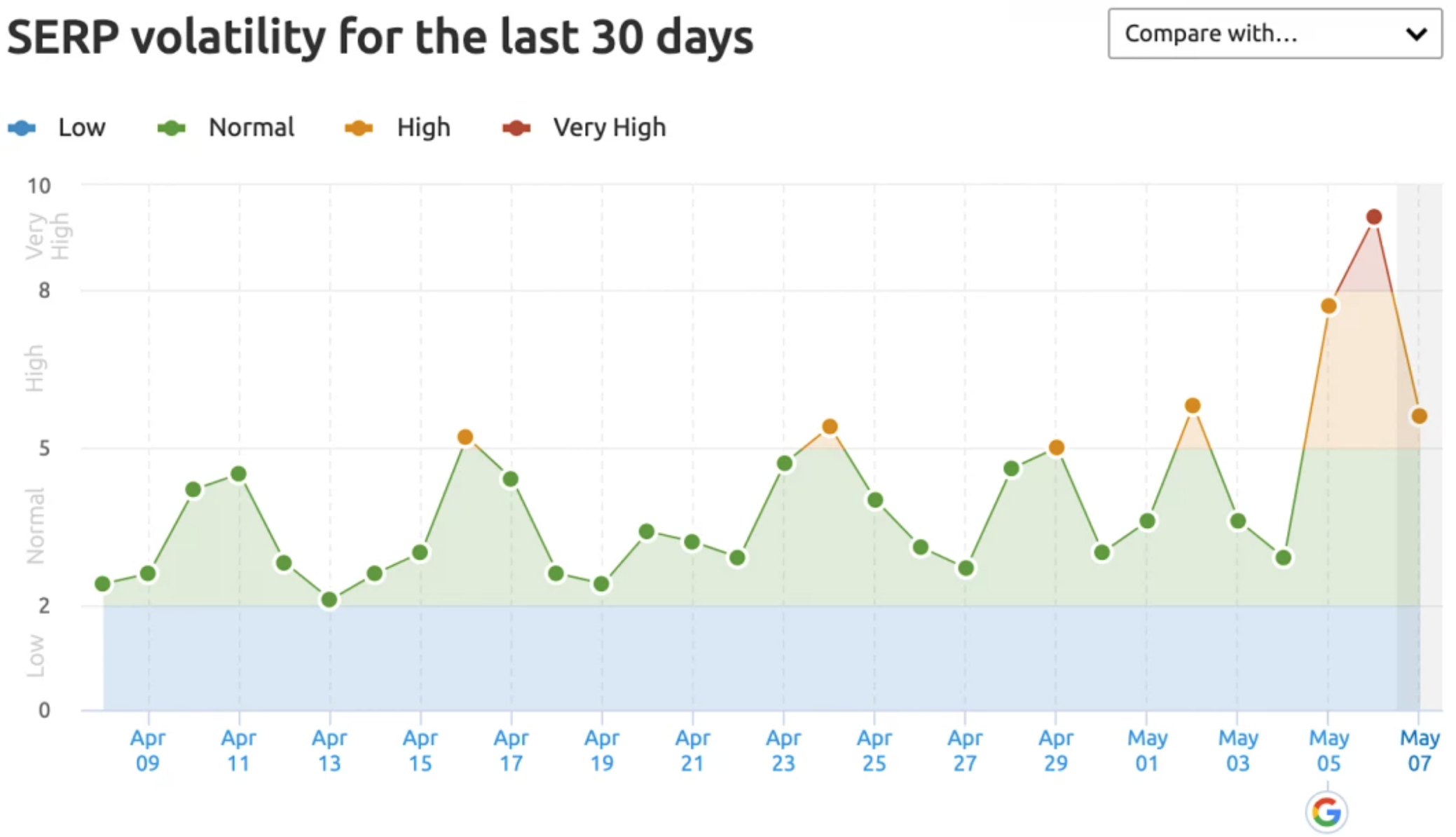Earlier this month, Google released another broad core algorithm update. This change is even more drastic than the last update, with volatility rates going as high as 9 or 9.4 points.
What are volatility rates? These are how rankings fluctuate on Google’s search engine results. For instance, a 2.4 would mean that listings are stable in their positions on Google’s search results.
You can find your vertical’s volatility by using tools such as SEMrush’s sensor. To check your own site on this platform, you’ll need to create an account.

Image courtesy of SEMrush
As can be seen above, volatility skyrocketed on May 6th. With such extreme movement, there were definitely some major changes to specific categories of websites. Unlike the January 2020 Core Algorithm Update which mainly hit “your money your life websites”, this one affected other fields as well.
Industries That Experienced High Volatility
Below we’ll take a look at which fields had the most changes in search results and which of Google’s principles this core update seemed to crack down on the most.
1. News Websites
One area that saw many ups and downs was News. These sites were all over the board, with NYPost.com down by 21.5%; even Snopes took a hit, losing roughly 20%. Others seemed to do well, with Businesswire gaining around 50 positions and indianexpress.com improved 16.5k of their positions. While these swings are big, they may not necessarily be permanent as this algorithm change will adjust with time.
2. Food & Drink
With food and drink, recipes especially were up and down across the industry. Food.com was down slightly at 5%, while simplyrecipes.com was up by 28%. These types of sites had a slight increase of around 2 positions up on search results.
3. Entertainment
While some sites in this sector saw increases, such as play.google.com with a 43% jump, many were negatively impacted significantly. One such example is Eventbrite, which lost 44 positions This could be due to the fact that offline events have suffered due to COVID-19. Overall there was an average 14 position drop in search results for this area.
What Factors Mattered The Most for This Update
We have continued to see that Google favors sites that follow its EAT principles, which are expertise, authority, and trustworthiness. Keeping this in mind, certain aspects definitely had an effect during this update.
Thin Content
For the May 2020 Google Core Algorithm Update, sites with thin content were hit hard, which means that websites with the following are doing badly post-update:
- Duplicate content
- Photo heavy sites with very little written content
- Web pages that generally lack information.
This is no surprise, as Google’s principles favor high-quality content that is useful to users. If you want to find out more about what thin content is, you can read up on it in this post.
Local Search
Another factor for the May 2020 Google Core Algorithm Update is how well link building was used for local searches. If the website was linked to frequently, Google tended to favor these in searches that contained the words “near me”, or in area-specific search queries.
Again, this makes sense considering that this establishes authority, one of Google’s main SEO ranking factors. For more in-depth information, feel free to check out our intro to link building.
The Takeaway
For each Google Core Algorithm Update, it has been demonstrated repeatedly that this search engine values websites that establish expertise, authority, and trustworthiness. If you want your site to succeed, you need to make sure that you are following these principles well. While it may take some extra effort, in the long run, your website will see increased rankings and traffic, and that can translate to more sales.
Affected by Google’s May 2020 Core Algorithm Update? Our SEO specialists are experts at building up websites through best practices. Chat with us today to find out how we can help your website!
